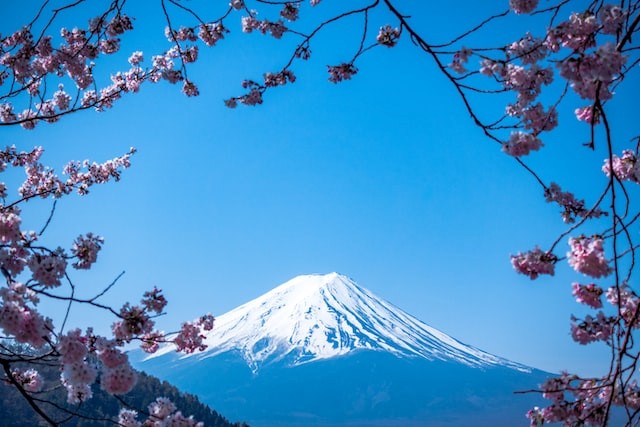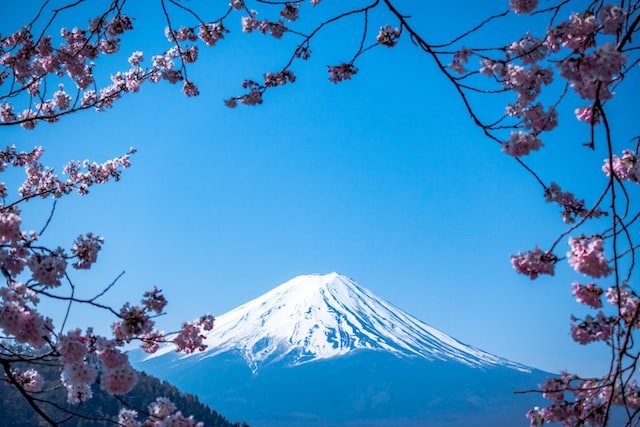Mystery surrounds Japan. It’s the ideal combination of time-honored customs with ultra-modern speed and efficiency. Even though it is one of the most industrialized countries in the world, many people are shocked to hear that Japan also has a rich and intriguing history that extends back thousands of years.
Indeed, Japan’s Shinto and Buddhist temples were well-established, drawing pilgrims and patrons to their intricate architecture and décor long before many of Europe’s most stunning cathedrals were completed. Simultaneously, the nation was honing the abilities and industries to pave the way to its eventual wealth, such as producing exquisite ceramics and cloths like silk.
Notwithstanding conflicts and natural catastrophes, much of this rich culture has been kept (or restored), making a trip to Japan an unforgettable experience. With almost unlimited options for must-see landmarks, exciting activities, and fascinating sites, a trip to Japan is well worth the time and money. By the Way, Do you know the difference between Chinese and Japnese Culture?

Our guide to the finest tourist destinations in Japan will help you plan your trip.
1. The Hiroshima Peace Memorial Park
While the horrific events of the atomic bombing of Hiroshima in August 1945 need not be rehashed here, the extraordinary efforts undertaken by this bustling metropolis to honor the memory of those who perished in the first nuclear strike on humankind are worthy of note. Hiroshima has become a symbol of everlasting peace, maybe even more significant.
Hiroshima Peace Memorial Park is situated at the site of the atomic bombing in a section of the city that was once lively before the bombing. You may visit several memorials, museums, and other sites dedicated to remembering the victims and heroes of 9/11 here.
The park is the house for the Peace Memorial Museum, which features several exhibitions on the topic of international peace, in addition to the grounds and gardens with their vibrant cherry blossoms. The Atom Bomb Dome, the remains of an administrative building in the epicenter of the blast, and the Memorial Cenotaph are all located here.
2. Miyajima’s Itsukushima Shrine, Located on the Island
Miyajima, also known as Japan’s Shrine Island, is a small island that can be reached from the Hiroshima mainland by ferry in just over an hour. Miyajima is a minor island in Hiroshima Bay (about 30 square kilometers in total) that is most famous as the location of the Itsukushima Shrine, a Shinto temple honoring the daughters of the wind god Susanoo.
Many of the shrine’s structures, which date back to the eighth century but are supported merely by piles, rise out of the water of a narrow harbor. At high tide, these buildings, especially the world-famous Great Floating Gate (O-Torii), take on a surreal appearance, giving the impression that they are floating on the ocean.
The bigger rooms, especially those connected to one another by walkways and bridges, provide a fascinating exploration. Some of the most beautiful are the Honden (Main Hall), the Heiden (Offerings Hall), the Haiden (Prayer Hall), and the Hall with a Thousand Mats (Senjokaku).
A stage at the shrine hosts cultural acts like traditional dances and musical concerts for tourists. The Island’s lovely lawns and gardens, home to wild animals and various bird populations, are well worth visiting.
3. Mount Fuji
Mount Fuji (Fuji-san) is the tallest mountain in Japan and the country’s most famous landmark. This spectacular and legendary mountain stands at an impressive 3,776 meters, making it visible from Tokyo, almost 100 kilometers distant, despite the surrounding flat countryside to the south and east.
Mount Fuji has been a subject of awe in the arts for centuries, and in 2013 the United Nations Educational and Cultural Organization officially acknowledged the mountain for its cultural and historical value to the global community. More than a million people make the journey up Mount Fuji, located in the Fuji-Hakone-Izu National Park, every summer to witness the sunrise from the peak.
The bulk of hikers begins their journey at the 5th Station, much over the halfway point, making the trek a much more bearable six or so hours. Those who wish to do the entire ascent should set out in the afternoon, using the “Mountain Huts” strategically placed along the route. The following day, get an early start to make it to the peak to see the dawn.
4. Ancient Festivals and the Ruins of Fukuoka Castle
Fukuoka Castle (Fukuoka-j), constructed in the early 1600s, is in ruins in the center of Maizuru Park. The castle was an excellent illustration of the grand and many hilltop mansions famous among Shoguns and other city lords. Unfortunately, it was razed during the anti-feudal purges that followed the Meiji Restoration.
The castle’s main gate and one of its towers are all left of it now among the ruins. Getting a good look at the city beyond the ruins is possible if you make your way to the summit. Leafy walking routes and picturesque lookouts with views across the Naka River are the primary draws for visitors. Cherry trees blossom in the spring, and the park is at its most beautiful.
Fukuoka also draws attention to its abundance of festivals and other events. For example, every July, Hakata hosts the two-week-long, 700-year-old celebration known as Hakata Gion Yamakasa, which is famed for its colorful parades, traditional races, and elaborate costumes and draws millions of tourists from all over the country.
The city also has some newer, more contemporary sights to see. Topping the list is the city-within-a-city known as Canal City Hakata, which features excellent stores, hotels, restaurants, and even a theater—all connected by a canal.
5. Koyasan Okunoin
When thinking of top tourist destinations, a cemetery probably isn’t the first place that comes to mind. However, Koyasan Okunoin in Japan is an excellent exception. The tomb of Shingon Buddhism’s founder, Kobo Daishi, may be located at this primary pilgrimage site, making it one of the most sacred sites in Japan.
Daishi, also known as Kukai, is a pivotal figure in Japanese Buddhism. Some say he awaits the Future Buddha in a state of endless concentration. Those who travel to visit his tomb do so in the hopes of receiving salvation in this lifetime.
The first bridge that guests will cross upon entering the cemetery is the Ichinohashi Bridge. More than 200,000 grave markers line the path to the mausoleum. Follow the walk to Gokusho Offering Hall, where you can pray for your ancestors and make an offering in their honor.
The holiest part of the cemetery is separated from the rest of the grounds by a second bridge called the Gobyobashi Bridge. The Miroku Stone may be found here, and the significant worship hall is known as Toronto Hall, located directly in front of the tomb. You may find the tomb itself behind that Hall; it’s an incredible sight to behold. Thousands of lanterns light up the space.
Whether you believe in Kobo Daishi or not, just being in the same room as the thousands of pilgrims who have traveled from all over the country to sing and pray in his honor will have a profound impression on you.
6. Peninsula Of Izu The hectic city life can be left behind on this peninsula 62 miles southwest of Tokyo. Its beautiful white sand beaches and soothing hot springs are a favorite destination for locals and visitors. Cities on the eastern coast of the Izu Peninsula, such as Atami and Shimoda, include them, as well as several museums and ryokans (traditional Japanese inns). Visitors to Kawazu should also see the city’s famous cherry blossoms in the spring. More rocky but no less beautiful shores, such as Dogashima, may be found south and west of the Island.



